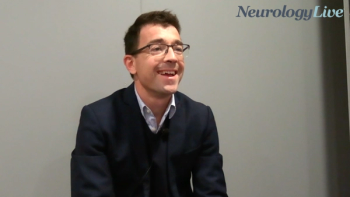
Heatmap Analysis Provides Further Support of Continuous Subcutaneous Apomorphine Infusion to Treat Parkinson Disease
Key Takeaways
- Continuous subcutaneous apomorphine infusion (CSAI) led to longer good ON time and fewer OFF episodes in Parkinson's disease patients compared to placebo.
- Patients on CSAI reported significant improvements in their condition, as evidenced by the Patient Global Impression of Change scale.
New heatmap analysis reveals continuous apomorphine infusion significantly improves ON time and reduces OFF episodes in patients with Parkinson disease.
A newly presented heatmap analysis of the phase 3 TOLEDO study (NCT02006121) revealed that treatment with continuous subcutaneous apomorphine infusion (CSAI; Onapgo; Supernus) led to more prolonged periods of good ON time uninterrupted by OFF episodes than placebo in those with Parkinson disease (PD). Notably, the changes in the pattern of motor states were accompanied by increased patient perceptions of improvement, further supporting the therapy’s impact in this patient population.1
Published in the Lancet Neurology in 2018, TOLEDO randomly assigned 106 patients living with the disease to either 3-mg/hour to 8-mg/hour dose of apomorphine (n = 53) or placebo saline infusion (n = 53) during their wake hours for a 12-week period. Led by
Presented at the
READ MORE:
TOLEDO, a pivotal phase 3 study, was the main trial that led to CSAI’s approval earlier this year. In the latest analysis, those assigned to CSAI had shorter mean duration of OFF episodes (1.3 h vs 2.2 h; P = .01) and greater mean reduction in other PD medication use (levodopa equivalent dose: –27.9% vs –9.0%; P = .0003). Notably, more patients on CSAI rated themselves as improved, per the Patient Global Impression of Change scale (79.1% vs 23.5%; P <.0001).
In the original study, those randomized to CSAI demonstrated an OFF time reduction of –2.47 hours/day compared with –0.58 hours/day for placebo (P = .0025), as well as an increase in ON time without troublesome dyskinesia of 2.77 hours/day versus 0.80 hours/day for placebo (P = .0008). Additionally, 62% of the apomorphine group were responders compared with 29% in the placebo group (P = .0008). At the end of the treatment period in TOLEDO, patients on SPN-830 experienced a mean reduction in OFF time of –2.47 hours per day (SD, 3.70) compared with –0.58 hours per day (SD, 2.80) for those on placebo (P = .0025).
In TOLEDO, treatment with CSAI produced notable clinical benefits compared with placebo. Nearly two-thirds of patients receiving CSAI (62%) achieved a reduction of at least 2 hours in daily OFF time, whereas only 29% of those on placebo reached this threshold. Participants treated with CSAI also reported meaningful gains in overall well-being, with 71% indicating improvements in general health compared with just 18% in the placebo arm.
On average, patients experienced a 2.77-hour increase in ON time without troublesome dyskinesia and demonstrated significantly better Patient Global Impression of Change scores (P < .001). Although reductions in oral levodopa dose did not reach statistical significance (P = .0615), CSAI was associated with a significantly larger decrease in levodopa-equivalent dose relative to placebo (P = .0014).
REFERENCES
1. LeWitt P, Hauser R, Kremens D, et al. Continuous Subcutaneous Apomorphine Infusion (CSAI) Reduces OFF Periods and Extends Periods of GOOD ON Time: Heatmap Analysis of the TOLEDO Study. Presented at: 2025 MDS Congress; October 5-10; Hawaii. Abstract S442
2. Katzenschlager R, Poewe W, Rascol O, et al. Apomorphine subcutaneous infusion in patients with Parkinson's disease with persistent motor fluctuations (TOLEDO): a multicentre, double-blind, randomized, placebo-controlled trial. Lancet Neurol. 2018;17(9):749-759. doi:10.1016/S1474-4422(18)30239-4
Newsletter
Keep your finger on the pulse of neurology—subscribe to NeurologyLive for expert interviews, new data, and breakthrough treatment updates.



































